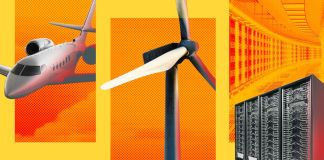On one sweltering summer afternoon in June, thunderstorms rolled over Boston Logan International Airport. It was the kind of brief, predictable summer squall that East Coasters have learned to ignore, but within hours, the airport completely shut down. Every departure was grounded, and flyers waited hours before they could get on their scheduled flights.
Among those stranded were Maxwell Tabarrok’s parents, in town to help move him into Harvard Business School, where he is completing an economics PhD. Tabarrok told Fortune he was fascinated by how an entire airport could grind to a halt, not because of some catastrophic event, but due to a predictable hiccup rippling through an overstretched system.
So, he did what any good statistician would: dive into the data. After analyzing over 30 years—and 100 gigabytes—of Bureau of Transportation Statistics data, he found out his parents’ situation wasn’t bad luck: Long delays of three hours or more are now four times more common than they were 30 years ago.
Not only that, but Tabarrok found airlines are trying to hide the delays by “padding” the flight times—adding, on average, 20 extra minutes to schedules so a flight that hasn’t gotten any faster still counts as “on time.” Thus, on paper, the on-time performance metrics have improved since 1987, even as actual travel times have gotten longer.
“For 15 years, from 1987 to 2000, the actual and scheduled times stayed very close together,” Tabarrok said. “Then, starting right around 2000, they started diverging—a pretty clear sign airlines made a decision to start padding their schedules to avoid shorter delays.”
The padding carries a hidden economic cost. Using average U.S. wage data, the extra minutes built into flights add up to roughly $6 billion in lost passenger time annually, the researcher calculated.
There are far more users in the National Airspace system today than there were decades ago, industry sources say. U.S. Department of Transportation data shows weather is the most common cause of non-airline delays. An ongoing shortage of air traffic controllers, combined with recent FAA equipment outages, has also disrupted operations worldwide.
A structurally unsound system
For Tabarrok, the root of the problem isn’t just bad weather, outdated infrastructure, or even airline strategy: It’s incentives. He argues the FAA has little reason to respond quickly to rising delays because the agency doesn’t bear the cost of stranded passengers, nor are they rewarded when airports run smoothly.
“I think the costs of delays can double, triple, quadruple over the next 10 years. But is anyone’s career negatively affected at the FAA? Probably not,” Tabarrok said.
He pointed to the shortage of air traffic controllers as an example. Hiring and training more staff would ease congestion and reduce cascading delays—a very simple solution that many people have called for. However, doing so requires sustained effort and leadership that is actually willing to push through bureaucratic inertia.
“You need somebody at the FAA who really cares about improving service. That’s not so easy to do because there’s really no incentive for somebody at the FAA to care a lot about this… they don’t get paid more,” Tabarrok said. “They don’t really get rewarded at all.”
A FAA spokesperson told Fortune the organization prioritizes safety, which sometimes necessitates delays. They pointed to a chart showing the top five causes of delays—with weather being “by far” the largest cause. They declined to answer questions about airlines padding schedules and incentives to improve airport quality.
Expanding airport capacity, for Tabarrok, is the most obvious long-term solution to reduce the cascading delays. But the U.S. hasn’t opened a major commercial airport since Denver International in 1995, and runway construction at existing hubs has been minimal, he said. Passenger traffic, meanwhile, has grown by about 50% since 2000, meaning more travelers are concentrated in the same physical space.
While we have built larger aircrafts to help carriers move more people, that’s also created new bottlenecks, he added. Bigger planes take longer to fly at every turn. They take longer to board, unload, and turn around at the gate, so the disruption continues to ripple into the schedule.
“The infrastructure at airports is fixed, especially season to season,” Tabarrok said. “So when you have more demand with fixed infrastructure, there’s going to be more delays.”
‘Pessimistic story’
Further, Tabarrok argued big-ticket fixes like building a new airport or runways face environmental reviews and legal challenges that can drag on for a decade.
That leaves staffing as the most realistic solution, but even that will require changing how the FAA recruits, licenses, and trains controllers.
“It’s kind of a pessimistic story,” Tabarrok said. “We have these two constraints that aren’t that responsive to the market pressures of people’s demand for more reliable travel, and they’ve been around for a long time.”
Without those changes, Tabarrok predicts the U.S. will be locked into a cycle where every summer thunderstorm or mechanical hiccup crashes airports and wastes millions of hours of Americans’ lives.
“If you just do some rough estimation of the value of people’s time, multiplied by how much time they’re spending waiting around in airports or waiting around for delays, you can easily get billions of dollars lost every year.” Tabarrok said. “And that cost will keep growing.”
Great Job Eva Roytburg & the Team @ Fortune | FORTUNE Source link for sharing this story.





